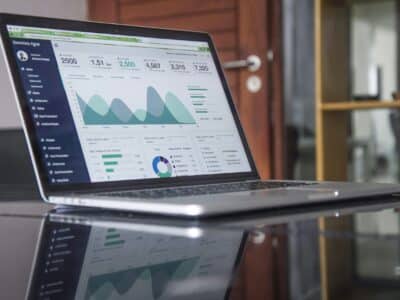Every company’s goal is to stay profitable and competitive. To make this happen, finance departments need to use data and analytics to determine if revenue is materializing as forecasted and costs are exceeding budget, as well as to gain insights into return on investment (ROI). This means finance departments must have a way to track projects and understand the degree of uncertainty so they can develop actionable plans for mitigating financial risks or optimizing investments.
An Analytics Roadmap for Finance is crucial to achieving this goal. It will allow finance departments to map out their data and analytic needs and create a plan to effectively utilize data in decision-making.
Timely access to changes in project complexity, scope, and completion timelines enable finance to evaluate cash flow impacts and propose resource reallocation or other mitigating actions, if warranted, while there is still time to improve the bottom line.
Other departments rely on financial data to make decisions. For example, marketing departments need to track lead conversions. If marketing team members spend money targeting specific demographic segments, they want to know, based on data, which demographic’s leads are successfully converting to sales and how many prospects can be converted.
To gain these insights, marketing departments need to extract financial data so it can be combined with information from other systems.
Companies also invest money in research and development to promote innovation through the creation of new products and services. Stakeholders want to know how these expenses are affecting long- and short-term growth, so organizations need a way to deliver timely and comprehensive analytics.
To avoid risk, track ROI, and generate insights from data, financial departments need to develop a data and analytics roadmap.
Here’s an overview of steps your company can take while building a data and analytics roadmap for finance.
Table of Contents
1) Build Your Own Data and Analytics Roadmap for Finance
The first step in the financial data and analytics roadmap is getting data out of third-party accounting software and into a flexible reporting platform that the company has built and has ownership over.
While accounting software typically has good reporting capabilities, it is difficult to customize. The common alternative, supplementing the accounting reporting tools with Excel spreadsheets, is a time-consuming manual process.
An adaptable data platform provides a place to merge and consolidate data from finance and different departments across the company. The data platform creates a single source of truth that can be used to generate the actionable insights needed to make decisions.
When building a data platform, companies should consider the goals and requirements of the different departments that will need to access and analyze financial data. Businesses need to extract data from their accounting system so it can be combined with data from other sources, such as multiple CRMs and external vendor applications to deliver more timely and comprehensive analytics for internal corporate users, external operators, and investors.
2) Model Your Data
Data modeling helps all departments collaborate with finance and is the first step in developing a data warehouse. While being shared across the business, financial data needs to be secured and protected from unauthorized access to meet compliance standards. To share information securely and efficiently, financial departments must build a finance model for data that promotes information governance.
The model needs to ensure that data access is segmented so that each group and department can use only relevant financial information. For example, financial data can be segmented for different marketing campaigns or research and development projects.
A data model organizes elements of data and describes how they relate to each other to establish a common understanding of that information. A data model allows your company to document the data sets that will be included in the data warehouse, the relationship between data sets, and the requirements of the data warehouse.
Once the data warehouse goes live, the data model establishes data lineage for all the objects in the warehouse and makes it easier to bring new objects in as business needs change.
The data model also clearly documents the data warehouse’s content, context, and sources, making it easier to conduct an audit or to comply with new data requirements, such as the GDPR framework that sets guidelines for the collection and processing of personal information.
3) Build Analytics
To gain insights from data, finance departments need more than reports. Finance departments need to tell a coherent story using data analytics that provides context and conveys why the story matters.
Building a data analytics strategy that processes data through different types of analytics allows finance departments to gain deeper, more memorable, and more meaningful insights.
A company should manage and have realistic expectations about what can be accomplished. The company’s goals need to align with its level of maturity in utilizing analytics and reporting.
The organization needs a framework for delivering analytics that recognizes 4 key phases:
A. Defining Metrics
Descriptive analytics present the current state of the business. They define and explain metrics and key performance indicators (KPIs) by starting with questions that identify business objectives and the best way to describe them, including identifying patterns and trends and presenting them in reports that give an overall view of business functions and goals.
B. Developing Diagnostic Reports
Once they have gathered descriptive reports, finance departments need a framework for answering questions about trends and patterns in descriptive data, including where, when, and why they happened. Diagnostic tools and reports allow business analysts to dive deeper into the data to identify new patterns and trends through capabilities that include drill-down and interactive visualization to perform more data discovery.
C. Predictive Analytics
Predictive analytics allow finance departments to forecast trends related to the budget and risk based on current and past trends. Finance departments must have the ability to model future trends or predict patterns based on historical data. Predictive analysis tools enable business users to build and access predictive models, enabling “what if” analysis against the data.
D. Prescriptive Analytics
At the end of the analytics roadmap for finance maturity model, prescriptive analytics recommend an action to prevent a downward trend, avoid risk, and ensure the continuation of positive trends. Ultimately users need to make decisions based on the analysis gathered at all 4 phases of analytics, combine them with their intuition, and act on them.
Analytics solutions should evolve to relate industry-specific knowledge and the insights you’ve gathered to prescribe actions that put your company on the right course.
Using a variety of analytics on a combination of financial data and data from other systems, companies can:
- View key performance metrics
- Quickly assess campaign effectiveness
- Identify trends and patterns
- Evaluate how results compare to other franchisees
- Make operational decisions based on timely data
CONCLUSION: Getting on the Path to Data and Analytics for Finance
When creating your company’s financial data and analytics roadmap, you don’t need to go it alone. Partnering with a data and analytics consultant will help your company follow all the right steps, including building an adaptable reporting and analytics platform.
With dbSeer’s help, companies can:
- Allocate more time to analyzing near real-time data and managing the business
- View top KPIs at-a-glance
- Slice and dice data points
dbSeer is a new breed of data and analytics engineering consultant. We use our bold vision to develop detailed plans for data analytics that can be accomplished through concrete steps.
As part of our team, we have the most experienced and successful analytics platform designers and builders in the industry. These dbSeer experts can bring our best practices to descriptive, predictive, and prescriptive analytics delivery for your company.
Find out more about how dbSeer can help your company develop and follow a data and analytics roadmap. Contact us today.




